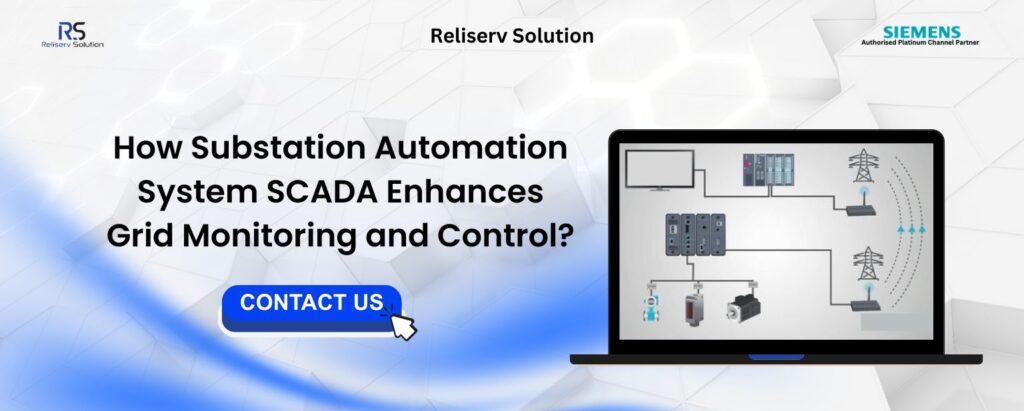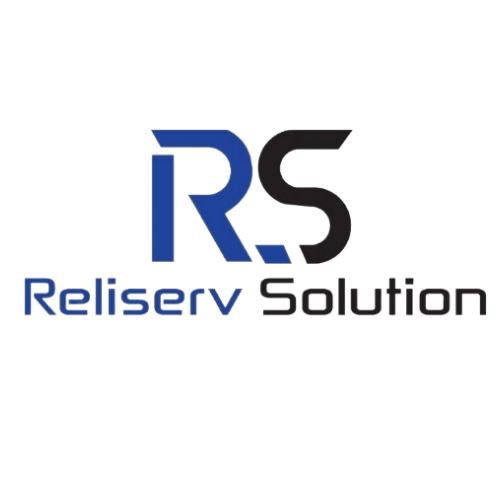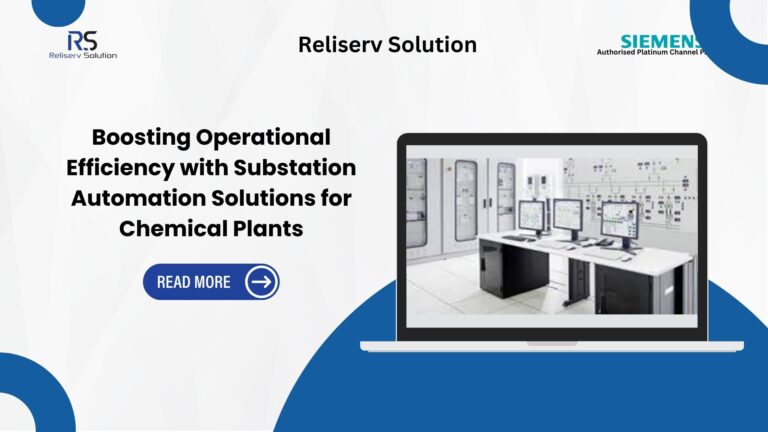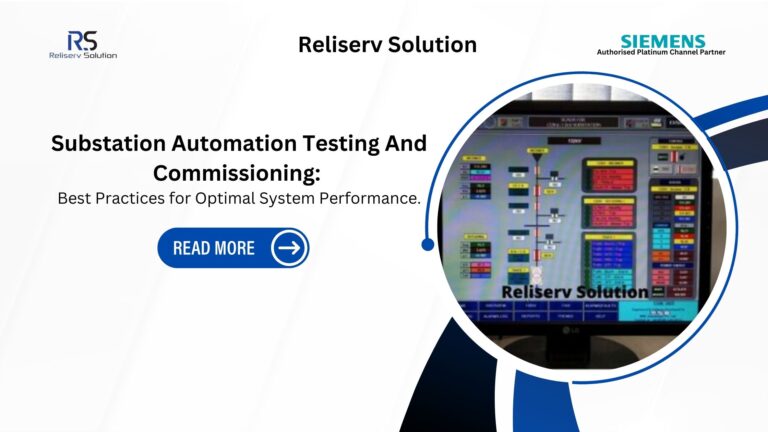In today’s fast-paced and energy-dependent world, ensuring the reliability, efficiency, and stability of power systems is more critical than ever. One of the transformative innovations in this area is the implementation of Substation Automation Systems SCADA powered by Supervisory Control and Data Acquisition (SCADA) technology. Together, they provide a robust and intelligent infrastructure that revolutionizes the way substations function, enabling real-time monitoring, remote control, enhanced reliability, and reduced downtime.
This article delves into how SCADA-based Substation Automation Systems enhance grid monitoring and control, the architecture and protocols that empower them, the services involved, and the long-term benefits for utilities and grid operators.
Understanding Substation Automation System SCADA
At its core, a Substation Automation System SCADA enables automated control, protection, and monitoring of substation operations. When integrated with SCADA, this system becomes significantly more powerful, offering real-time data. acquisition, supervisory control, and intuitive human-machine interfaces (HMIs) that streamline operations.
SCADA comprises several key components:
- Field devices: such as sensors, IEDs (Intelligent Electronic Devices), RTUs (Remote Terminal Units), and PLCs (Programmable Logic Controllers).
- Infrastructure for communication: utilizing protocols like as OPC, Modbus TCP/IP, IEC 104, and IEC 61850.
- Control centers are equipped with servers, operator workstations, and graphical user interfaces.
- Historian and data storage systems: for trend analysis and event logging.
When implemented efficiently, SCADA in substations ensures that utilities can operate the grid with greater awareness, faster decision-making, and more reliable protection schemes.

Key Features of Substation Automation System SCADA
Let’s explore some of the prominent features and function that define an effective SCADA-driven SAS setup:
- Real-Time Monitoring: SCADA continues to gather analog and digital data from various substation components. These include voltages, currents, power factors, breaker status, transformer tap positions, and more. Operators have immediate access to information about the grid’s performance and condition.
- Remote Control and Operation: By field equipment such as On-Load Tap Changers (OLTC), Remote Tap Changer Controllers (RTCC), relays, and circuit breakers with RTUs, SCADA enables remote operation of critical components. This eliminates the need for manual intervention and speeds up response during fault conditions.
- Data Logging and Trend Analysis: Historic data logging is vital for predictive maintenance, load forecasting, and operational audits. SCADA systems allow operators to access historical trends, correlate past events, and plan corrective actions before potential failures occur.
- Advanced Alarming and Event Handling: SCADA offers real-time alarms for fault conditions, abnormal parameter readings, or equipment failures. With prioritization and filtering capabilities, the system ensures that critical issues are addressed promptly.
- Cybersecurity and User Management: Modern SCADA systems include secure communication, role-based access, audit trails, and protection to guard critical infrastructure against cyber threats.
How SCADA Enhances Grid Monitoring
- Centralized Visibility: SCADA aggregates data from multiple substations, giving operators a bird’s-eye view of the entire network. This enables system-wide performance assessments and coordinated responses to dynamic load conditions or faults.
- Health Monitoring of Equipment: Equipment like transformers, circuit breakers, and busbars can be monitored for temperature, loading, and operational cycles. If any parameter exceeds its limit, Substation Automation SCADA Suppliers triggers alerts or automatic load-shedding mechanisms.
- Grid Stability Monitoring: Voltage and frequency fluctuations, unbalanced loads, or harmonic distortions can destabilize the grid. SCADA constantly measures these variables and helps maintain system stability by activating corrective controls in real-time.
How SCADA Enhances Grid Control
Monitoring is just one half of the puzzle. Substation Automation System SCADA truly shines in its control capabilities. It plays a pivotal role in:
- Automated Control Logic: Using pre-programmed logic in RTUs and relays, SCADA can perform automatic operations during fault conditions, such as isolating a faulty feeder or initiating load transfers.
- Load Balancing: Operators can control breakers or tap changers to balance the load across feeders or phases, ensuring uniform voltage profiles and reducing system stress.
- Scheduled Switching: For maintenance or load management, Substation Automation SCADA Suppliers allows scheduled operations like switching transformers or de-energizing circuits during low-load hours, improving operational efficiency.
Communication Protocols Powering SCADA Integration
Effective communication is the backbone of any SCADA-enabled automation system. We implement protocols such as:
- IEC 61850: Designed specifically for substation automation with object-oriented data modeling and fast GOOSE messaging.
- Modbus & Modbus TCP/IP: Popular for connecting PLCs and HMIs.
- IEC 104: Widely used for communication between RTUs and SCADA master stations.
- OPC (OLE for Process Control): Allows compatibility between vendor systems.
Field devices, RTUs, control panels, and central SCADA servers can all exchange data with each other without any problems thanks to these protocols.
Our Services in Station ADA-Based SAS Implementation
We offer end-to-end services for substation automation projects using Substation Automation SCADA Price, covering:
1. Design & Engineering
- PC and Operator Panel-based HMI/SCADA development
- Communication architecture planning
- Preparation of engineering documents like SLDs, cable schedules, I/O lists, and BOM
2. Installation & Integration
- Erection of panels, including Siemens RTUs, CRP (On Load Tap Changer), and RTCC panels
- Cable laying, field signal wiring, and termination
- Installation of DC Power Systems and battery banks
3. Configuration & Commissioning
- RTU and SCADA configuration using Siemens tools
- Field signal mapping and communication link testing
- Factory and Site Acceptance Testing (FAT & SAT)
4. Training & Handover
- SCADA fundamentals and networking
- Configuration of I/O devices
- Operating the SCADA console
- Analyzing and troubleshooting real-time and historical data trends
- Creating SCADA interfaces through Excel, PLCs, relays, or motor simulators
Real-World Application Example
In one of our projects, we upgraded an aging substation by installing Siemens RTUs and SCADA with a fully operational control room. The system included:
- Two control relay panels (CRP and RTCC)
- Remote tap changer operations from the control center
- Data acquisition from multiple substations to a central SCADA
- Field signals are transmitted using IEC 104 and IEC 61850
The result? Immediate fault detection, faster switching operations, centralized decision-making, and enhanced grid resilience.
Long-Term Benefits of SCADA in Substation Automation
Investing in Substation Automation SCADA Price for substations yields substantial long-term advantages:
- Enhanced Reliability: Fewer outages and faster recovery during outages through fault isolation and restoration.
- Improved Efficiency: Optimized load distribution and energy usage across the network.
- Reduced Operational Costs: Less manual intervention, lower maintenance costs, and extended equipment life.
- Regulatory Compliance: Accurate logging and reporting of power quality, outages, and performance KPIs.
- Scalability: The system can evolve with growing grid demands and new technology integrations like renewable energy and smart meters.
Conclusion
The transition from conventional substations to smart Substation Automation System SCADA marks a vital leap in the evolution of power infrastructure. As electricity demand grows and the grid becomes increasingly complex with renewable integration, control becomes.
SCADA-enabled Substation Automation not only empowers utilities to monitor and control assets remotely but also enhances grid performance, stability, and resilience. With our cutting-edge SCADA solutions built on globally recognized protocols and systems like Siemens RTU and HMI, we help power companies lead the charge toward a smarter, more sustainable future.
Reliserv Solution, a Platinum Channel Partner of Siemens, is a reliable distributor and supplier of Siemens Numerical Relays. Based in Mumbai, Maharashtra, the company offers a comprehensive range of services and tailored solutions for panel builders and diverse industrial applications. If you have any questions or need assistance regarding the Substation Automation System SCADA, feel free to contact us at +91 7506112097 or email us at [email protected]. To explore one of the popular products from Automation Solution, click here.



